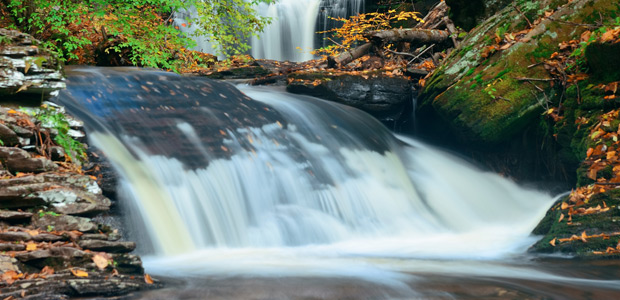
HS&E
Marcellus Activity Not Harming Watersheds
WASHINGTON–Oil and natural gas activities in northern Pennsylvania are responsible for gas production in the Marcellus Formation jumping from 193.0 billion cubic feet a year in 2006 to nearly 5.5 trillion cubic feet a year in 2017. A two-year study published in the Proceedings of the National Academy of Science concludes those operations have not affected surrounding watersheds.
“The study just released by PNAS confirms what we have known all along: that the responsible development of Pennsylvania’s natural gas resources is not incompatible with protecting our environment,” says Rebecca Oyler, Pennsylvania legislative director for the National Federation of Independent Business.
Researchers evaluated the geochemical and biological effects of shale gas development on 25 small watersheds. According to the study, “Shale Gas Development Has Limited Effects on Stream Biology and Geochemistry in a Gradient-Based, Multiparameter Study in Pennsylvania,” samples from the headwater streams seasonally for consecutive years yielded no statistically significant relationships between the intensity, presence or absence of shale gas development and any signs of chemical constituents, including oil and gas geochemical tracers, and no changes in microbial communities.
The number of horizontally drilled and hydraulically fractured shale oil and gas wells in the United States has jumped from nearly 28,000 in 2007 to more than 126,000 in 2017, with Pennsylvania horizontal/fractured wells increasing from 3 in 2006 to 7,977 in 2017. The study acknowledges the potential for that development to affect nearby stream ecosystems. However, it warns the ability to generalize current studies is limited by the small geographic scope, as well as limited breadth and integration of measured chemical and biological indicators.
“This work provides a framework for investigations of anthropogenic effects stemming from natural resource development, and highlights the importance of conducting studies which control for regional and temporal variability,” the study says.
According to researchers, this new study tested the hypothesis that a quantifiable, significant relationship exists between the density of oil and gas development, increasing stream water concentrations of known geochemical tracers used by the oil and gas industry, and the composition of microbial communities. The 25 tested streams drain lands across a gradient of shale gas development.
“We feel that the existing setbacks in commonwealth leases as recommended in the ‘Guidelines for Administering Oil and Gas Activity on State Forest Lands’ are effective and currently exceed regulatory requirements,” the Pennsylvania Department of Conservation and Natural Resources says.
Highly Saline Waters
Water produced during hydraulic fracturing operations is a complex mixture of reservoir formation brines and injected fluids containing water, sand, hydrocarbons, surfactants, biocides and an array of proprietary compounds that return to the surface over a well’s lifetime, “Shale Gas Development” describes.
The report notes that in general, and in the Marcellus Shale in particular, produced waters are highly saline and have a distinct elemental composition in comparison with produced water from younger formations. Marcellus-produced waters in North-Central Pennsylvania are described as sodium-calcium-chlorine brines characteristic of evaporated seawater, with concentrations of total dissolved solids in excess of 100,000 milligrams a liter, and high concentrations of other elements such as boron, lithium, barium and strontium, which it says are useful as geochemical tracers for the presence of produced water.
The Pennsylvania state forests system was chosen as the study area because it contains a gradient of shale gas development under a consistent regulatory structure while having only limited land use other than recreation, timber harvesting and oil and gas development, the study says. There have been 74 oil and gas lease sales in the commonwealth’s forest system, resulting in more than 2,000 wells being drilled since 1947.
The study notes about 32% of the spills of oil- or gas-related materials across Pennsylvania occurred within 100 meters of a stream, and urges further research into how oil and gas development under different regulatory regimes and land uses can impact the commonwealth’s waterways.
“We haven’t heard any proposed changes to the regulations impacting the oil and gas industry as a result of this study, but should they be considered in the future, we would ask that they be examined in the context of effectiveness and what regulatory restrictions come at a high price but have little impact,” Oyler says.
The study was funded by the U.S. Geological Survey, the Pennsylvania Department of Conservation and Natural Resources, and the Pennsylvania Department of Environmental Protection.
For other great articles about exploration, drilling, completions and production, subscribe to The American Oil & Gas Reporter and bookmark www.aogr.com.






